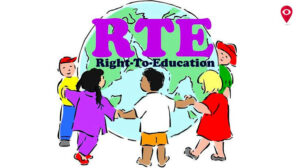Employment generation the key focus of new textile package
As per ICRA analysis, the latest cabinet’s announcements on Textile package to improve the competitiveness of India’s exports by ~1.5% as the benefits so realized by duty credits will be passed on to buyers by way of lower garment prices. In ICRA’s view, the increased benefit of 25% of capital subsidy under Amended TUFS for new garment units will further reduce the capital investments requirements for new units by ~7.5%. In addition, the proposal would also benefit the new garment unit by way of savings of up to ~3.7% on labour costs and ~1% on total manufacturing cost of apparel due to governments contribution towards employer’s share of EPF contribution, says ICRA in the report.
The union cabinet on 22nd June 2016 approved a special package for employment generation and promotion of exports in Textile and Apparel sector. The key objectives of the package are to achieve cumulative increase of USD 30 bn. In garment exports and investment of Rs. 74,000 crores over next 3 years. This apart, the package also aims at generating 2.5 crore jobs in the garment sector.
According to Mr Anil Gupta, Assistant Vice President , ICRA Ltd, “All the above steps will lead to increased competitiveness of India’s apparel exports and improve employment generation in the garment sector given its labour intensiveness. While the fiscal incentives under the package will improve capacity additions as well as increase the competitiveness of India’s exports, however achieving the target of USD 43 bn of apparel exports by CY 2018 appears to be a challenge.”
India’s garment exports grew at ~ 4% in CY 2015, whereby they increased to USD 17.1 bn from USD 16.5 bn in CY 2014. The CAGR for the period CY 2010 to CY 2015 stood at 10% whereby the exports increased from ~USD 11 bn to USD 17 bn.
As per Mr Gupta, “Demand slowdown from key importing countries in Europe and USA, which is reflected in our estimates of YoY de-growth of ~4 % in global garment trade in CY 2015 can be a major challenge for growth in India’s exports”
ICRA also highlights that India’s textile exports are highly skewed towards cotton based sectors as reflected in their share of ~70% of India’s total textile exports, whereas the global fiber consumption is largely skewed towards manmade fiber. This apart, the domestic textile sector suffers from lot of structural inefficiencies, whereby the garment manufacturing clusters are located away from fabric manufacturing clusters, which in-turn are away from yarn manufacturing and cotton growing clusters. Fragmentation of Indian textile industry leads to lot of systemic in-efficiencies and competitive disadvantage for the India’s textile exports. Unless these issues are addressed, the competitiveness of India’s export will always remain under threat.





